Bullets or Ballots

Brief Synopsis
Cast & Crew
William Keighley
Edward G. Robinson
Joan Blondell
Barton Maclane
Humphrey Bogart
Frank Mchugh
Film Details
Technical Specs

Synopsis
When anti-crime crusader Ward Bryant is murdered, suspicion immediately falls on racketeer Al Kruger. The murder instigates a grand jury investigation of crime syndicates like Kruger's. The investigation is to be headed by Capt. Dan McLaren, the superior officer and friend of former police detective Johnny Blake, now walking a beat in the Bronx. At one time, Kruger had asked Johnny to join his organization, but Johnny chose to remain honest. Johnny expects to join McLaren's investigation, but McLaren fires him for no apparent reason. His old friend Lee Morgan offers him a position in her numbers running game, but he gratefully turns her down. Instead, he takes Kruger up on his earlier offer. Under orders from his secret partners, Kruger wants Johnny to eliminate the weak spots in the organization. Gunman Bugs Fenner doesn't trust Johnny and, in fact, he is really working secretly for the police. His job is to discover the men behind Kruger. When the criminals accuse Johnny of being a stool pigeon, he suggests they start a new racket, based on Lee's numbers game, which is very successful. Encouraged by Fenner, Lee believes that Johnny has double crossed her. After Fenner kills Kruger during an argument, Johnny takes over. He finally meets the bosses, but now Fenner learns that Johnny is working for the police. He tricks Lee into revealing Johnny's hiding place and even though she has a change of heart and tries to warn him, Fenner and Johnny shoot it out. Fenner dies and Johnny is badly wounded, but he manages to finger the bosses before he dies himself.

Director

William Keighley
Cast

Edward G. Robinson

Joan Blondell
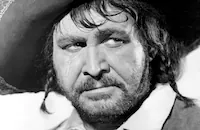
Barton Maclane

Humphrey Bogart
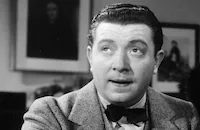
Frank Mchugh
Joseph King
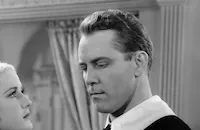
Richard Purcell
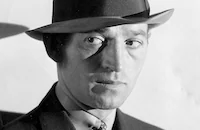
George E. Stone
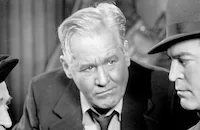
Joseph Crehan
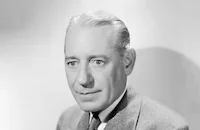
Henry O'neill

Henry Kolker

Gilbert Emery
Herbert Rawlinson

Louise Beavers
Norman Willis
William Pawley
Ralph Remley
Frank Faylen
Wallace Gregory
Frank Bruno
Edna Mae Harris
Milt Kibbee
Garry Owen

Addison Richards
Edwin Stanley

Anne Nagel
George Lloyd
Crew

Film Details
Technical Specs

Articles
Bullets or Ballots
Robinson stars as pipe-smoking Johnny Blake, a New York City cop who's in charge of a squad that regularly puts the screws to fearful racketeers. Blake, a hot-head, generates unwanted publicity when he angrily punches the police commissioner (Joseph King) and gets kicked off the force. A powerful crime boss named Al Kruger (Barton MacLane, more or less playing Dutch Schulz) likes Blake's style, so he hires him in an attempt to gain fresh ideas about sidestepping the law.
Unfortunately, Kruger's vicious right-hand man, "Bugs" Fenner (Bogart), doesn't trust Blake. In fact, he'd kill him if he knew he could get away with it. Before it's all over, "Bugs" will indeed kill someone, and Blake will steal a lucrative numbers racket from Kruger's girlfriend, Lee Morgan (Joan Blondell). There's a macho battle for control, of course, but Blake, who's been harboring a major secret, will have the final word.
Keighley's knack with gangster material was arguably the key element of Bullets or Ballots success; he had previously directed Journal of a Crime (1934), G Men (1935), and Special Agent (1935). Keighley once stated that he aimed to "serve the great masses who actually do know good entertainment when they get it." A hefty $1,750 a week contract from Warner Bros. may have encouraged this populist stance. He didn't, however, bring Bullets or Ballots to the screen all by himself. Martin Mooney, a real-life crime reporter, wrote the original story, and he knew a thing or two about the Manhattan underworld. Seton I. Miller then adapted Mooney's work into a screenplay that featured the kind of dialogue and pacing that audiences had come to expect from the genre.
Late in his life, Robinson challenged film scholars to take note of a pattern that guides the movies he made with Bogart, and Bullets or Ballots is no exception. Both actors' characters would usually wind up dead by the end of the picture, but there was a distinct pecking order to how it happened: When Robinson was the bigger star, Bogie would get it first, leaving room for his rival to hang around a little longer before biting the dust. When Bogie became the bigger actor, the order was reversed. Who says movie-making isn't a science?
It should also be pointed out that, like many other Hollywood filmmakers, Keighley left his cushy position at the studio to bravely serve his country during World War II. His documentary on the Eighth Air Force Bomber Command, Target for Today, was the first film selected by the U.S. Archives for its library. He may not have been the most famous director of all time, but he was in the major league of studio craftsmen and well respected by his peers.
Directed by: William Keighley
Producer: Louis F. Edelman Screenplay: Seton I. Miller
Story: Martin Mooney Editing: Jack Killifer
Cinematography: Hal Mohr
Art Design: Carl Jules Weyl
Music: Herbert Stothart
Special Effects: Fred Jackman, Jr., and Warren Lynch
Cast: Edward G. Robinson (Johnny Blake), Humphrey Bogart ("Bugs" Fenner), Barton MacLane (Al Kruger), Joan Blondell (Lee Morgan), Frank McHugh (Herman McCloskey), Joe King (Captain Dan 'Mac' McLaren), Dick Purcell (Ed Driscoll).
BW-82m. Closed captioning.
by Paul Tatara

Bullets or Ballots
Quotes
Trivia
Johnny Blake, played by Edward G. Robinson, was based on the real life policeman Johnny Broderick, while Al Kruger, played by Barton MacLane, was based on the notorious gangster Dutch Schultz.
Notes
According to the New York Times review, the character of "Johnny Blake" was based on the real life policeman Johnny Broderick, sometimes known as "The Duke" or "The toughest cop on Broadway." Writer Martin Mooney, a New York City reporter, uncovered the Welfare Island Prison scandal and spent time in jail as a result of his muckraking. His front page stories exposing racketeering provided the basis for the script. The "Al Kruger" character was based on notorious gangster Dutch Schultz. Motion Picture Herald's "In the Cutting Room," listed William Harrigan and Pierre Watkin in the cast, but their final participation has not been confirmed.

Miscellaneous Notes
Released in United States 1936
Released in United States 1936














